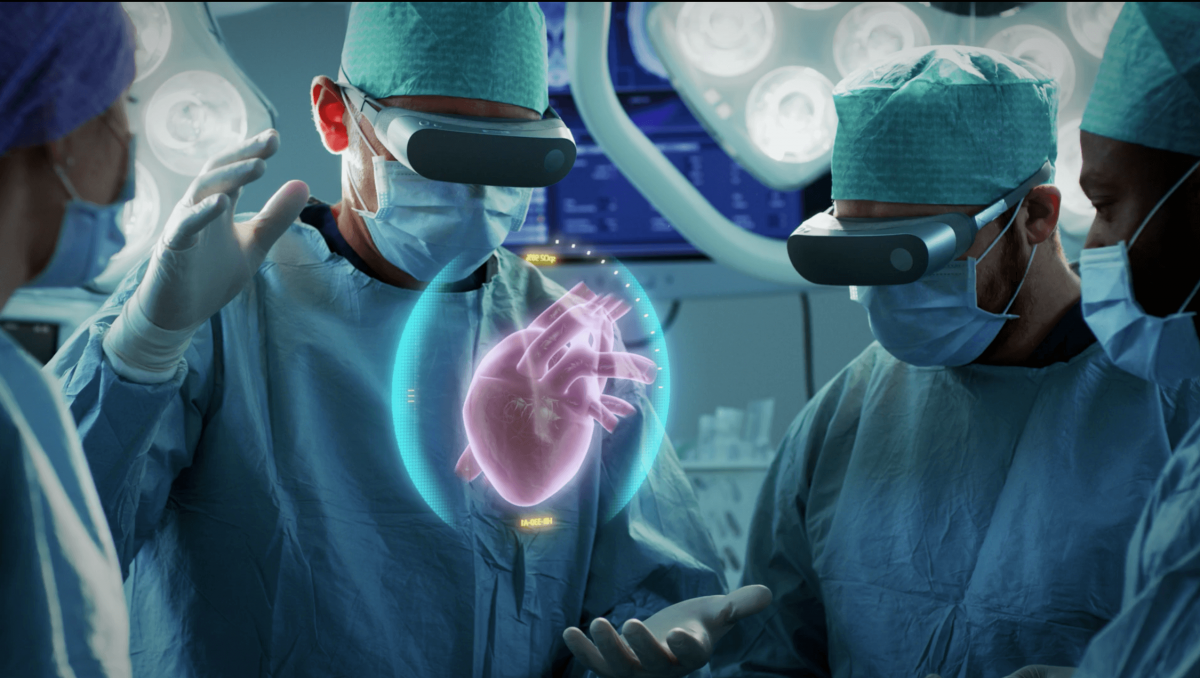Augmented Reality (AR) is a set of technologies that complements the physical (real) world with digital data and media and allows for an unprecedented human-virtual experience. This combination of technology and the physical aspect of the world allows its user to fully benefit from data, which is often said to be two-dimensional. Virtual Reality (VR) on the other hand replaces physical reality with a computer-generated environment in which the user is fully immersed thanks to hardware such as VR headsets (Porter and Heppelmann, 2017).
Since the beginning of the 21st century, the healthcare sector has undergone tremendous changes. Efforts to constantly improve the industry in terms of how patients can be cured, rising costs, and the expanding use of connected devices make medicine favourable to the implementation of AR and VR now more than ever. As a matter of fact, the use of AR and VR in the healthcare industry is expected to reach $5.1 billion by 2025 according to Goldman Sachs (2016).
Even though these technologies are still under development, they are already widely used in the healthcare sector. At George Washington University, advanced VR tools are utilised by neurosurgeons to explore patients’ brains prior to performing the medical procedure. By using these technologies, neurosurgeons can better prepare for operations and avoid accidents, thus improving their surgical efficiency (Li, 2022). In addition to VR, surgeons make use of AR through connected glasses to monitor the patient’s vital signs while remaining fully concentrated on the actual procedure.
VR can also be used for patient care and education. In an article about VR and AR in the healthcare industry, vStream (2018) discusses a program set up by the NHS that allows young patients to be taken through every step of an MRI scan thanks to a VR headset prior to the real procedure. This program aims to lessen the fear and anxiety of patients, thus allowing for a smoother execution of the medical procedure.
Although AR and VR are still under development, it is clear that they are capable of truly disrupting the healthcare industry and that current applications of these technologies are already drastically improving medical services and patient experience.
References:
GOLDMAN SACHS 2016. Virtual and augmented reality. Understanding the race for the next computing platform.
LI, D. 2022. How Virtual Reality Is Transforming Healthcare [Online]. Available: https://www.uschamber.com/technology/how-virtual-reality-is-transforming-healthcare#:~:text=VR%20has%20proven%20to%20be,and%20chronic%20pain%2C%20and%20more. [Accessed 21/09/2022].
PORTER, M. E. & HEPPELMANN, J. E. 2017. Why every organization needs an augmented reality strategy. HBR’S 10 MUST, 85.
VSTREAM. 2018. VR & AR FOR HEALTHCARE & MEDICINE [Online]. Available: https://vstream.ie/vr-ar-for-healthcare-medicine/ [Accessed 23/09/2022].


Hi Victor, thanks for your contribution! A very relevant topic, for sure. Augmented reality and virtual reality are two of the fastest developing technologies that can be integrated into healthcare systems, while improving patient care. I certainly think that with the emergence of such technologies, it eases a lot of processes, like you’ve mentioned before. Though, how do you think, besides these 2 technologies, about the future emerging technologies in healthcare sectors, such as robots performing a surgery? I must say that I’d definitely feel more assured and safer when there is a doctor or other human assistance next to any type of technology. Some things and industries can be fully automated, like the assembly of cars, however, the healthcare sector is certainly not one of it, in my opinion. What do you think? I would love to hear your thoughts about this!
Hi Mila, many thanks for your interesting comment! I personally think that robots do have their place in the operating room, however not for any procedure (yet). For surgeries that are more common, e.g., cataract surgeries, they could definitely be used! However, I think that surgeries that require a highly skilled surgeon to be operating are not likely to be executed by robots any time soon. What do you think about this?